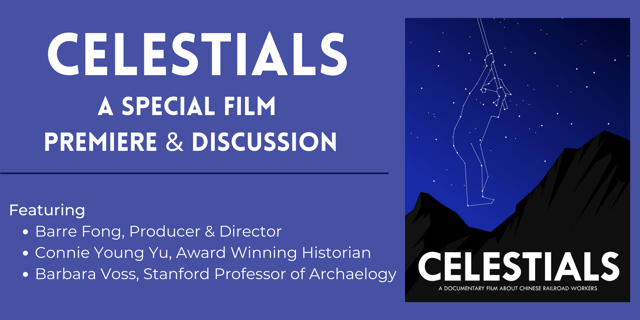North America’s oldest railroad history organization—the Railway & Locomotive Historical Society, Inc. (R&LHS)—marks its 100th anniversary this year. Founded in Boston in 1921, the nonprofit R&LHS is among the oldest groups dedicated to the history of technology anywhere. Through its publications, ten regional chapters, and outreach programs, the group tells the stories of how and why railroads were and still are important.
The histories of R&LHS and the Center for Railroad Photography & Art are intertwined, with CRP&A’s principal founder, the late John Gruber, having edited the Society’s Quarterly Newsletter and often having contributed to its flagship journal, Railroad History.
In addition, R&LHS has long honored photographic excellence through its Fred A. and Jane R. Stindt Photography Award. The award is given for a significant body of work over a long period of time, or a single photographic project or publication, making an outstanding contribution to the photographic interpretation of North America’s railroad history. Stindt (1911-1992) was a prolific California photographer and author.
Many of the Stindt honorees have been recognized by, or presented programs for, the CRP&A. Among these are Wallace W. Abbey, Frank Barry, Ted Benson, James A. Brown, Travis Dewitz, John Gruber, Victor Hand, Joel Jensen, Stan Kistler, Blair Kooistra, J. Parker Lamb, O. Winston Link, Greg McDonnell, Joe McMillan, William D. Middleton, Mel Patrick, Steve Patterson, David Plowden, Jim Shaughnessy, Richard Steinheimer, and Shirley Burman Steinheimer.
In recent years, members of the R&LHS awards committee have often presented the Stindt Award in-person at the Friday night banquet of the CRP&A’s Conversations conference. The CRP&A’s own publications have received other R&LHS book and article awards. Notably, Railroaders: Jack Delano’s Homefront Photography, received the 2015 George W. and Constance M. Hilton Book Award.
Through its William D. Middleton and John H. White Jr. Research Fellowships and other forms of sponsorship, the R&LHS generously supports the CRP&A’s Conversations conferences and other projects. Recently, those have included 2019’s “After Promontory: 150 Years of Transcontinental Railroading” and 2021’s “Railroads and the Moving Image.”
Articles in Railroad History frequently explore photography and other forms of visual illustration. Among them are pieces by the late John Gruber, principal founder of the CRP&A and its first president, and by Scott Lothes, president since 2013 and executive director since 2011.
- A photo essay on the disappearing semaphores of BNSF’s Raton Subdivision, by Richard Koenig, RRH 221, Fall-Winter 2019.
- C.H. Caruthers, 1847-1920 – A Pioneer of American Locomotive History and Illustration, by John Ott, RRH 219, Fall-Winter 2018.
- Altoona and the Penn Central Image, Dark paint and red ink, a look at official locomotive portrait photography from the steam age to Penn Central, by Dan Cupper, RRH 217, Fall-Winter 2017.
- Gordon S. Crowell: At 90, a photographer looks back on his wide-ranging portfolio, by John Gruber, RRH 216, Spring-Summer 2017.
- American Railroads and Sponsored Films, A wide-angle view, 1940-1955, by Norris Pope, retired editorial director at Stanford University Press, RRH 215, Fall-Winter 2016.
- A Spy? No, Just a Photographer (Lucius Beebe), by John Gruber, RRH 214, Spring-Summer 2016.
- Chicago: Colorful, creative posters and a 1920s multimedia campaign, by John Gruber and J.J. Sedelmaier, RRH 213, Fall-Winter 2015.
- Gordon Parks’ Images of Washington Union Station. A wartime crossroads viewed through perceptive eyes, by Tony Reevy, RRH 212, Spring-Summer 2015.
- Photographer Jack Delano’s trip west on the Santa Fe Railway in 1943. John Gruber has ferreted out the human stories behind the pictures, RRH 211, Fall-Winter 2014.
- John Gruber looks at William Henry Jackson’s work for railroad clients – much of which was used to promote rail travel to scenic destinations. Also, Scott Lothes of the Center for Railroad Photography & Art previews an exhibition at the Chicago History Museum, focusing on the human side of photographer Jack Delano’s World War II-era work for the Farm Security Administration-Office of War Information, RRH 210, Spring-Summer 2014.
- Photographer Frank Barry documents the last days of Mexican steam and he writes about his adventures in another culture. His photos are often arrestingly beautiful, and his experiences are delightfully amusing, like something from “Innocents Abroad.” RRH 209, Fall-Winter 2013.
- John Gruber gives us a retrospective on Andrew J. Russell, photographer of the Civil War and of the Union Pacific Railroad construction. Gruber shows that Russell’s work was a business development tool for UP and continues to be a useful historical resource–topics that scholars often ignore. RRH 208, Spring-Summer 2013.
- Tony Reevy continues Railroad History’s “Artist of the Rail” series with a profile of photographer Jack Delano, RRH 201, Fall-Winter 2009
- Art in the Age of Steam: An unprecedented museum exhibition shows how railroads changed the world that the great artists saw, RRH 199, Fall-Winter 2008.
Many of these publications are available as back issues from R&LHS at rlhs.org, or free for members of JSTOR (Journal Storage), a digital archive that serves many libraries and universities. Access to JSTOR is also a benefit of R&LHS membership.
All of us at the CRP&A heartily wish our friends at the R&LHS a very happy 100th birthday. Here’s to another century of telling the profound and moving stories of railroading.





 An autorack train speeds past the Gerald Grain Center on the outskirts of Archbold, Ohio, in August 2019. Photograph by Francis Byrne.
An autorack train speeds past the Gerald Grain Center on the outskirts of Archbold, Ohio, in August 2019. Photograph by Francis Byrne.